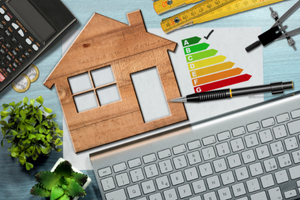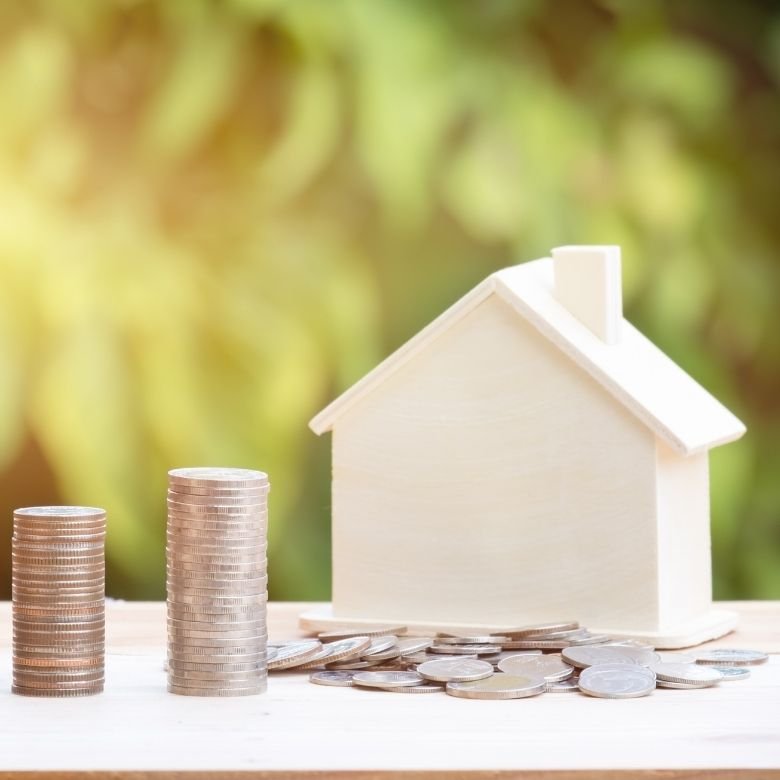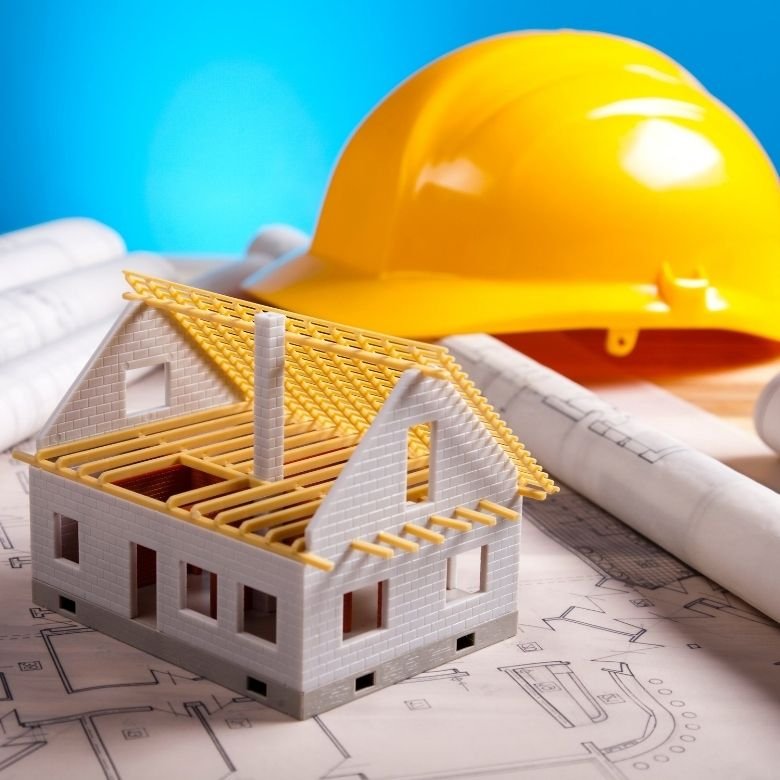When you plan to build a house, it is worth considering not only its functionality and comfort, but also method of use, construction costs and environmental impact of the entire project. This is facilitated by an increasing number of passive building designs, which are enjoying ever greater interest among project owners with each passing year. What is passive construction engineering? What advantages and solutions do these buildings have? Which materials work well in passive construction engineering, and is it worth building such a house? If you are seeking answers to the above and also other questions, read our whole article!

What is a passive house?
Zero energy, energy efficient, passive buildings — these terms have been making staggering advances in the construction industry for several years now. Unfortunately, many people still use them in an out of context way, not understanding the differences between each of the standards. The definition of a passive house is fairly simple — one where the annual energy demand does not exceed 15 kWh/m2. By the term “energy” we mean the primary energy used for room heating and lighting, preparation of hot water and supplying equipment with power. To meet such strict standards, passive construction engineering involves a series of state-of-the-art solutions, materials and technologies that are used to reduce the energy demand to the required minimum while at the same time utilising renewable energy to the maximum.
How do we characterise passive construction engineering?
A properly constructed passive house should have excellent thermal insulation to significantly reduce the risk of heat loss from the interior. The structure of such a building, and the adopted architectural and material solutions, should to the greatest possible extent avoid thermal bridges, those places in the building with the highest heat losses. Due to this, passive construction engineering can be characterised by the following types of property:
- simple building formats designed on a rectangular or square plan;
- avoidance of difficult to insulate elements, such as parapet walls, dormers, lucarnes, etc.;
- large glazed areas on the southern side to fully utilise solar energy;
- avoidance of window openings on the northern side to reduce thermal energy losses;
- optimal room layouts that minimise the need for additional lighting and heating;
- utilisation of state-of-the-art technologies, such as mechanical ventilation with heat recovery (recuperation);
- consideration given to renewable, green sources of energy, such as photovoltaic systems or heat pumps.

Passive buildings versus energy efficient houses
It is still a common practice to confuse energy efficient houses with passive buildings. The difference between these two forms, however, is fundamental. The annual energy demand of an energy efficient building is usually around 30 to 60 kWh/m2 — up to about four times the demand of a passive building!
With regard to architecture the differences are slight — in both cases a simple form and high-quality thermal insulation are what matters! Passive buildings need a monopitch or a double-pitched roof, whereas for energy efficient houses such a roof arrangement is not always required. Another difference involves the heating system. While passive houses have virtually no classic solutions, such as solid fuel stoves or condensing boilers, their application in energy efficient construction engineering has become a common practice. This means, however, heating equipment utilising significantly less power than that used in traditional houses.
Co-funding for the construction of a passive house
The cost of construction of an energy efficient house can be reduced by co-funding from European Union resources, government programmes, and local government programmes. Grants and tax relief are primarily associated with modern energy solutions, such as PV systems, heat pumps or recuperation systems, as well as projects relating to energy retrofits of buildings or replacement of heating systems.

Design as the foundation of a passive house
It is worth noting here that the first condition that allows the construction of a really passive house is a well-considered design, one including the necessary technologies as well as structural and material solutions. It is important to consider appropriate forms of building thermal insulation, heat recovery support systems and an optimum room layout allowing the best use of solar energy, right from the stage of planning the construction work. Any mistakes at the engineering design stage will effectively reduce the building’s energy-related properties. Therefore if you are dreaming of a really passive house, have the design drawn up by a specialist design engineering studio, or choose one of the numerous ready-to-use adaptable plans.
Insulation in a passive house
One of the main factors deciding whether a house meets the requirements of a passive house is well-selected thermal insulation. The insulation concerns not only the external and internal walls, but also foundations, slabs, floorings and slanted ceilings. Passive houses feature considerably thicker insulation layers, even up to 30 cm. To achieve this, various types of thermal insulation materials are used to prevent heat transmission to the highest possible extent. These include polyurethane foams. Insulation systems based on PUR foams have high levels of sealing, and are easy to apply, while spray insulation allows the potential to insulate the actual elements of the building structure.
A wide range of spray thermal insulations and polyurethane systems are available from PCC Group. These have been developed for passive as well as green buildings.
If you have already selected a suitable type of insulation, pay close attention to the doors and windows to ensure they feature corresponding thermal coefficients.
Ventilation of passive buildings
Due to high heat losses resulting from natural ventilation, its use in passive buildings should be avoided. In such houses it is necessary to use mechanical ventilation with heat recovery, the ever-popular recuperation method. A properly designed supply-exhaust system can reduce heat losses by up to 80%. Heat absorbed from the air may be used to heat the house or the water supply, additionally reducing the need for a heating system.
What materials should be used to construct a passive house?
For modern passive buildings, numerous construction materials and technologies are applied to create energy efficient structures. The walls for a passive building are usually double or cavity designs, based on:
- cellular concrete;
- wood;
- expanded clay aggregate concrete;
- sand-lime;
- ceramics;
- prefabricated elements.
Material selection depends on various factors, such as type of project, preferences of the project owner, ground and weather conditions, as well as the other systems or structural solutions used.
Technologies in passive construction engineering
Based on the above long list of construction materials for a passive house, the contractor can select one of the leading forms of construction. It is currently possible to meet the requirements of a passive building using a frame form, such as wooden beams or prefabricated wooden elements, but the leading method is that based on masonry.
It is extremely important that the construction of a passive house be entrusted to experts with enough experience. Self-build construction of passive buildings is not really an option. Such projects require high-level expertise to avoid mistakes that may result in increased energy consumption and heat losses, leading to the situation where the house cannot fulfil the strict passive building standards.
Heating in a passive house
The idea of passive construction engineering is to completely eliminate heating based on fossil fuels, such as coal or eco-pea coal (popular in Poland). Unfortunately, due to the weather conditions in our country, some form of heating equipment is usually still a requirement. That is why, along with well-considered room layouts and large-size southern glazing, the selection of such environmentally friendly heating sources as heat pumps or IR heating, supplied from a residential PV system, is vital.

How much does it cost to construct a passive house cost?
Anyone considering the construction of a passive house has to bear in mind that the cost of the entire project will be higher than the cost of a traditional or even an energy efficient building. This arises from the need to apply specific material and technological solutions, as well as labour rates. The final cost of a passive house obviously depends on, without limitation, the surface area of the house, number of storeys, selected design and the type of materials and technologies used.
Passive buildings — real savings
One thing is certain — although the project cost is higher, the construction of a passive house remains economically viable. This is because the cost is later recouped in the form of lower charges for electricity, hot water or heating. The financial savings on a day-to-day basis are, however, not the only benefits. It is equally important that such a house is incredibly comfortable for everyone using it and friendly for the environment. With care for a clean planet becoming an increasingly substantial aspect of daily life, with actions being taken globally leading to the highest possible restrictions on the use of conventional sources of energy, passive construction engineering becomes a perfect response to the needs of the times in which we live.